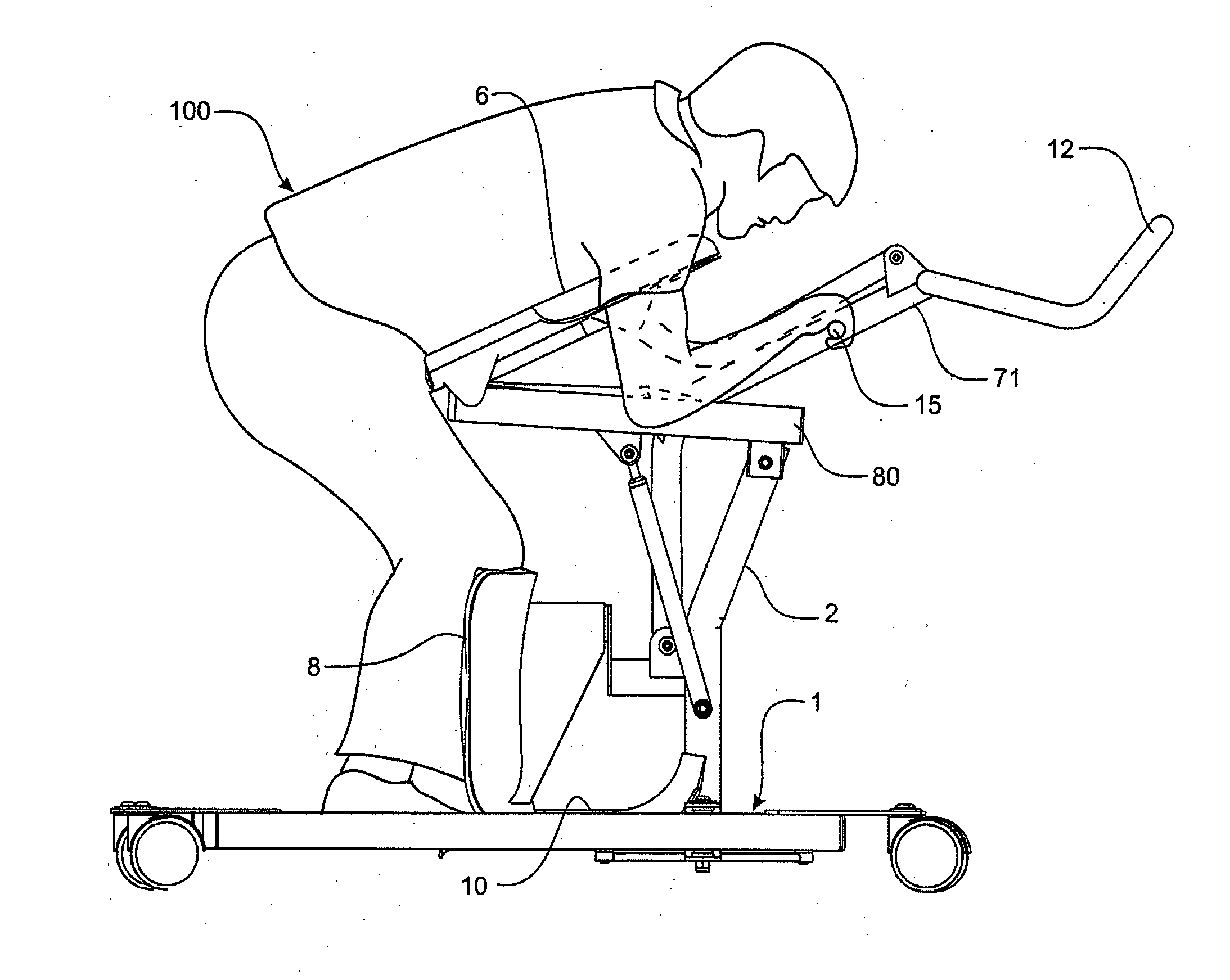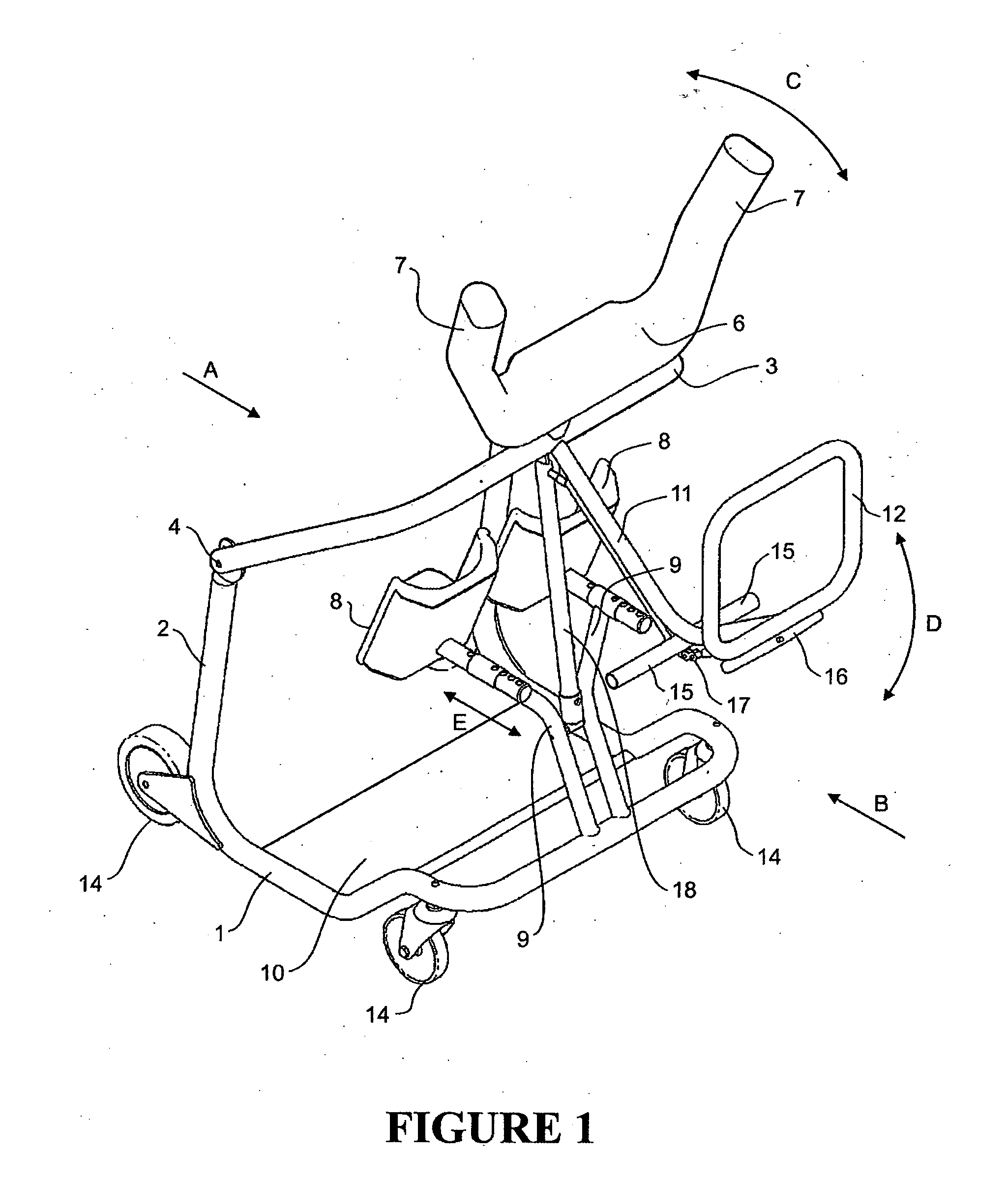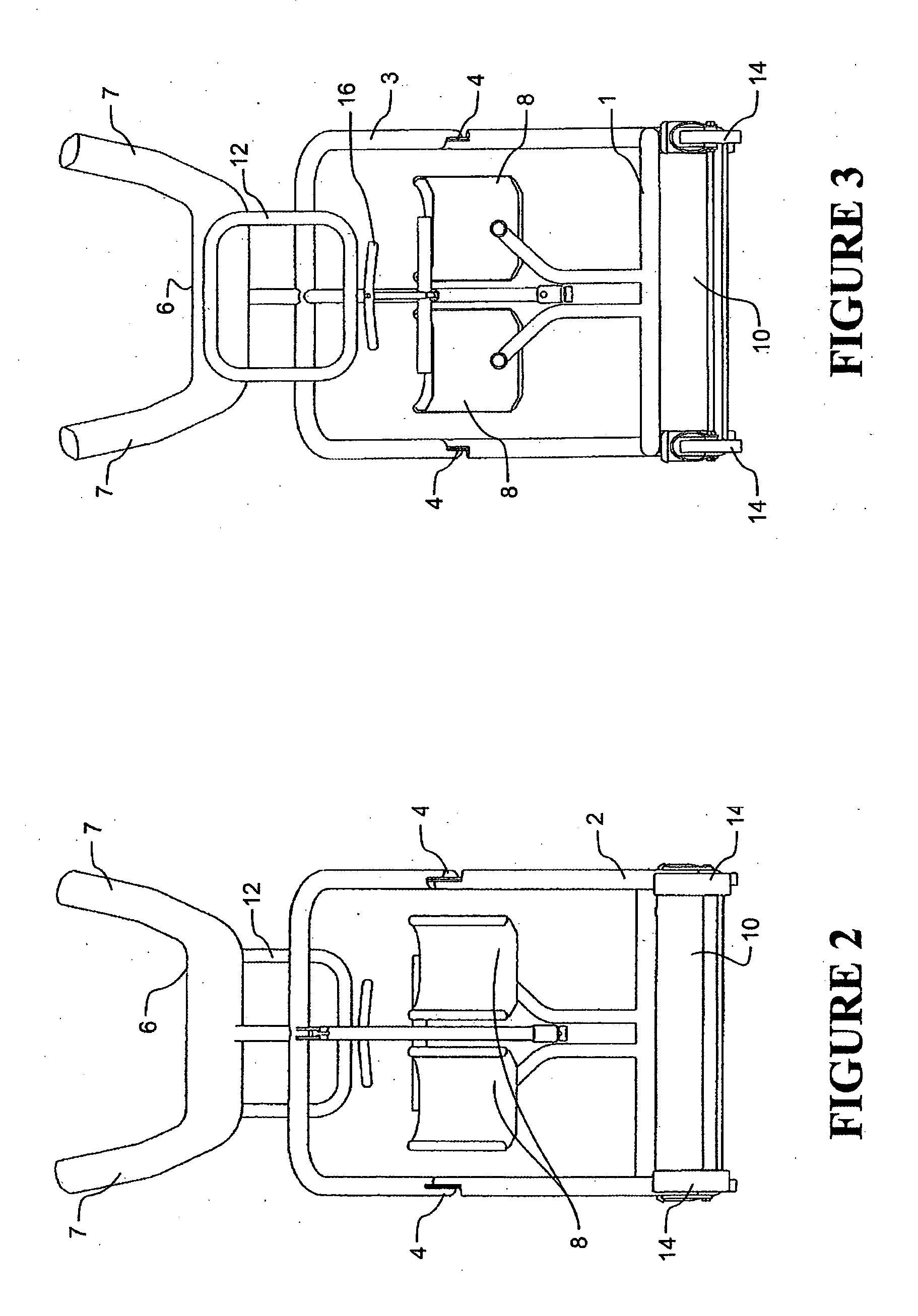Person Moving Devices For Moving Persons Of Limited Mobility
a technology for moving devices and people, applied in the direction of nursing beds, transportation and packaging, wheelchair/patient conveyancing, etc., can solve the problems of caregivers' back injuries and run a significant risk
- Summary
- Abstract
- Description
- Claims
- Application Information
AI Technical Summary
Benefits of technology
Problems solved by technology
Method used
Image
Examples
first embodiment
[0080]The first embodiment patient mover of the invention shown in FIGS. 1 to 9 is formed largely of bent metal tube or pipe, but in other embodiments may be otherwise constructed.
[0081]The lower floor engaging frame part has an approximate square u-shape as shown and comprises upright elements 2. The upper frame part is indicated at 3 and is pivotally mounted to the top of the uprights 2 of the lower frame part 1 at spaced pivot points 4, for movement of the upper frame part 3 relative to the lower frame part 1 as indicated by arrow C in some figures, between a load-unload position and transport position, as shown in FIG. 9.
[0082]The upper frame part includes a cradle 6 facing a patient side of the device, which is preferably covered with a resiliently compressible material such as a high density foam material or is otherwise padded, and which is positioned to engage the patient's chest when the patient is carried by the patient mover. In the embodiment shown the cradle 6 includes ...
second embodiment
[0090]FIGS. 11 to 19 illustrate a second embodiment of patient mover of the invention, which again is formed largely of bent metal tube or pipe but may be otherwise constructed. Unless indicated otherwise, similar reference numerals as in FIGS. 1 to 9 indicate similar elements such as cradle 6 / 7 and handle 11 / 12 for example.
[0091]In this embodiment a lower floor engaging frame part 1 again has an approximate square u-shape as shown and mounts a central upright 3. Referring particularly to those figures which show the patient mover of this embodiment in side elevation, a section 1a of the lower frame part on either side is formed with a low radius of curvature in a vertical plane (or no radius of curvature so that section 1a is flat or substantially flat) and sections 2 on the patient side of the device are formed with a decreased radius of curvature or at least are cranked away from the sections 1a as shown. Rollers 14a (or skids) are provided which protrude slightly below the frame...
third embodiment
[0096]FIGS. 20-27 illustrate a third embodiment of patient mover of the invention which is similar to that of FIGS. 1-9. Unless indicated otherwise again similar reference numerals as in FIGS. 1-9 indicate similar elements. In this embodiment the lower floor engaging frame part 1 comprises a single upright element 2 on one side, and the upper frame part comprises a single part 3 on the same side and pivotally mounted by (single) pivot 4 to the top of the single upright element 2.
[0097]The upper and lower frame parts are formed of relatively large diameter tube for strength. The upper frame part includes transverse part 3a to which the cradle 6 is mounted. Telescopic stabilising strut 18 which may also provide limit stops for movement between the load-unload and transport positions is provided on the one side only of the device. As before the device may also include a latch mechanism which is engaged when the upper frame part 3 is returned to the transport position, to lock the upper...
PUM
 Login to View More
Login to View More Abstract
Description
Claims
Application Information
 Login to View More
Login to View More - R&D
- Intellectual Property
- Life Sciences
- Materials
- Tech Scout
- Unparalleled Data Quality
- Higher Quality Content
- 60% Fewer Hallucinations
Browse by: Latest US Patents, China's latest patents, Technical Efficacy Thesaurus, Application Domain, Technology Topic, Popular Technical Reports.
© 2025 PatSnap. All rights reserved.Legal|Privacy policy|Modern Slavery Act Transparency Statement|Sitemap|About US| Contact US: help@patsnap.com



